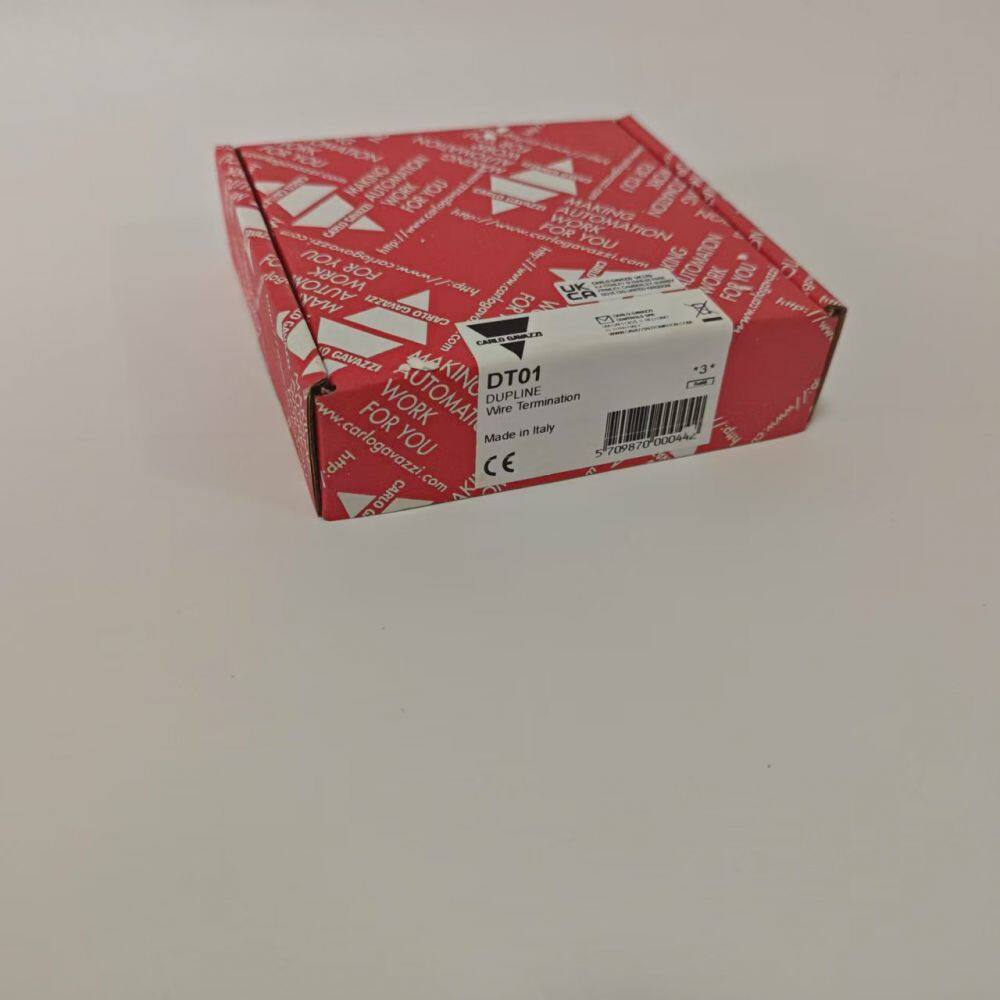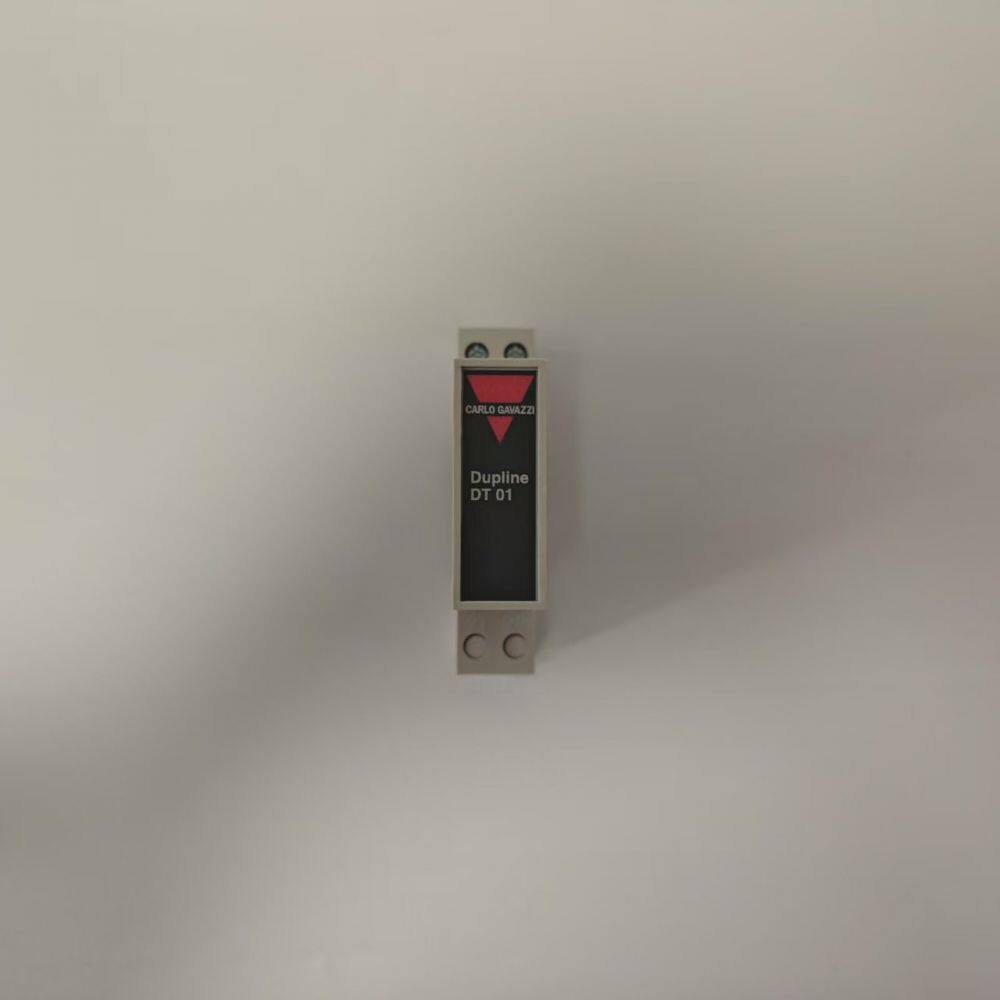-
 peter
Hi there! Welcome to my shop. Let me know if you have any questions.
peter
Hi there! Welcome to my shop. Let me know if you have any questions.
Your message has exceeded the limit.

What are the common faults of Carlo Gavazzi Duplex repeater GS38920000230?
2025-06-11 08:06:20
 The common faults of Carlo Gavazzi Duplex repeater GS38920000230 usually focus on the following aspects:
The common faults of Carlo Gavazzi Duplex repeater GS38920000230 usually focus on the following aspects:
Common fault phenomena and troubleshooting points
Communication interruption or unstable signal:
Fault manifestation: The entire Duplex network or some nodes have intermittent communication, data errors, and inability to communicate.
Possible reasons and investigation:
Wiring issue: Check if the A1, A2, B1, and B2 terminals of the relay are securely and correctly connected. Confirm that the polarity (A1/A2, B1/B2) is not reversed. Check if there is oxidation or corrosion on the wiring terminals.
Terminal resistor missing/incorrect: Terminal resistors (usually 120 Ω) must be correctly installed at both ends of the Duplex bus (the farthest master and farthest slave, or the physical end of the bus). Check if the location of the repeater requires or affects the configuration of terminal resistance. Ensure that only the physical ends of the bus have terminal resistors.
Cable quality or length: Check whether the Duplex bus cable connecting the repeater meets the specifications (shielded twisted pair) and whether the shielding layer is well grounded (usually grounded at one point on the power end). Check if the length of a single bus segment exceeds the Duplex specification (usually 1000 meters). Repeaters are used to extend this distance and confirm that the total topology length is within the allowable range.
Address conflict: Although the repeater itself does not occupy a communication address, the device address on the network segment it connects to must be unique. Check for duplicate addresses within the network segment.
Baud rate setting: Confirm that the communication baud rate setting of the entire Duplex network (master station, all slave stations, repeaters) is consistent. Repeaters are usually transparent transmission and do not involve baud rate settings, but it is necessary to ensure that they support the speed used by the network.
Relay malfunction: If the above wiring and configuration issues are resolved, it may be due to damage to the internal circuits of the relay (transceiver, signal conditioning circuit).
Power failure:
Fault manifestation: The indicator light of the repeater does not light up or flashes abnormally, and it cannot work at all.
Possible reasons and investigation:
Supply voltage: Confirm that the power supply voltage provided to the repeater meets its requirements (usually 24V DC ± 10%). Use a multimeter to measure the voltage at the power terminal.
Power supply: Check if the power supply provides sufficient current (refer to the power consumption requirements in the repeater manual). Insufficient power supply may result in instability or inability to start.
Power wiring: Check if the power wires (+24V and 0V/COM) are connected correctly and securely. Check if the fuse is blown.
Power quality: Check whether the power supply is stable, whether there are large fluctuations or interference. If necessary, use a regulated power supply or add filtering.
Abnormal status of indicator light:
Fault manifestation: The PWR light does not light up, the COM light does not light up or flashes abnormally (specific meanings need to refer to the manual).
Troubleshooting:
The PWR light does not light up: it basically indicates a power problem (no power supply, low voltage, wiring error, internal power circuit damage).
COM light not on: usually indicates that the repeater has not detected valid Duplex signal activity. Check the bus wiring, terminal resistance, whether the main station is working, and whether the upstream equipment/lines are normal. If the upstream is normal, it may be a fault in the receiving part of the repeater.
Abnormal flashing of COM light: may indicate communication conflicts, poor signal quality (excessive interference, severe attenuation), mismatched baud rate (if adjustable), or internal faults. It is necessary to determine the specific flashing mode (refer to the manual) and network status.
Physical damage and environmental factors:
Fault manifestations: damage to the appearance of the equipment, burning of internal components, and failure after a period of operation.
Possible reasons:
Overvoltage/Surge: Overvoltage is introduced into power or communication lines (such as lightning strikes, power failures, and heavy load switching).
Short circuit: A short circuit occurs in the power terminal or communication terminal.
Overheating: The installation environment temperature is too high, the ventilation is poor, or the heat sink is blocked.
Damp/Corrosive: Installed in a damp, dusty, and corrosive gas environment.
Vibration: Installation in a highly vibrating environment can cause loose solder joints and component damage.
Wiring error: Connecting the power supply to the communication terminal by mistake or vice versa.
Hardware malfunction:
Fault manifestation: After eliminating all external factors (power supply, wiring, configuration), the equipment still cannot work normally, or there are traces of burnt components, odors, etc.
Possible reasons: Aging, breakdown, and burning of internal electronic components (capacitors, resistors, IC chips, optocouplers, protective devices, etc.).
Suggested troubleshooting steps
Observing the indicator light: This is the most direct diagnostic basis. Record the status of PWR and COM lights (constantly on, off, flashing mode).
Check the power supply:
Measure whether the voltage at the power terminal is stable at around 24VDC.
Check if the power cord connection is secure and correct.
Check the wiring:
Carefully check all communication lines (A1/A2/B1/B2) entering and exiting the repeater for correct, secure, and no short circuits/open circuits. Pay special attention to polarity.
Check if the shielding layer is well grounded (recommended to be grounded at a single point on the power end).
Confirm that the installation position and resistance value of the terminal resistor are correct.
Isolation test:
If possible, try temporarily removing the repeater from the network and directly connecting the devices at both ends to see if communication is restored, in order to determine whether it is a problem with the repeater or other parts of the network.
Replace the repeater with a known normal device for testing (if conditions permit).
Check the environment: Ensure that the working temperature and humidity are within the allowable range, there is no severe vibration, and good ventilation.
Refer to the manual: Carefully read the official technical manual or installation guide of GS38920000230, confirm the specific wiring diagram, indicator light meaning, technical specifications, and environmental requirements.
Contact technical support: If the above steps cannot solve the problem, or if you suspect that it is a hardware failure of the repeater itself, please collect relevant information (model, serial number, fault phenomenon, indicator light status, wiring diagram, network topology, troubleshooting steps already done) and contact:
Carlo Gavazzi Official Technical Support
Technical support from equipment suppliers
Important Note
Safety first: Before conducting any inspection or wiring operation, be sure to disconnect the power supply and follow electrical safety operating procedures. Confirm power outage before operation.
Static electricity protection: Pay attention to static electricity when in contact with electronic devices.
Manual is king: The specific behavior and indicator light definitions of specific models must be based on the latest official manual.
Please provide a more specific description of the fault phenomenon (such as indicator light status, specific network performance), which can help you analyze the problem more accurately.
Tags: Carlo Gavazzi, GS38920000230, Duplex repeater

